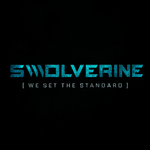Thymalin is a natural peptide bioregulator derived from the thymus gland, developed in the former Soviet Union to support immune restoration, anti-aging, and tissue regeneration. As part of the thymic peptide family (alongside Thymosin Alpha‑1), Thymalin works by rebalancing the immune system, enhancing T-cell production, and regulating gene expression associated with cellular repair and longevity.
Clinically used for over 40 years in Russia and Eastern Europe, Thymalin has shown promising effects in treating age-related degeneration, immune deficiency, and chronic inflammation — making it a powerful peptide for athletes, aging adults, and individuals recovering from illness, injury, or overtraining.
In this beginner’s guide, we’ll cover what Thymalin is, how it works, its unique mechanism of action, benefits, safe dosing strategies, and how it compares to other thymic peptides for performance, resilience, and longevity.
What Is Thymalin?
Thymalin is a natural polypeptide extract derived from the thymus of young calves, originally developed in Russia to regulate immune function and delay aging. It belongs to a class of compounds called cytomedins — short peptide bioregulators that influence DNA transcription and cellular differentiation.
Approved for medical use in Russia since the 1980s, Thymalin has been studied in thousands of patients for its ability to:
-
Restore proper immune function
-
Reduce systemic inflammation
-
Normalize hematopoiesis (blood cell formation)
-
Promote tissue regeneration
-
Extend lifespan in aging models
“Thymalin exhibits immunomodulatory and geroprotective effects by reprogramming gene expression linked to immune restoration and tissue repair.”
— Khavinson et al., Biogerontology
Unlike single-function peptides like Thymosin Alpha‑1, Thymalin contains multiple active peptide fragments that influence various systems — making it more holistic in its action.
It is administered via intramuscular or subcutaneous injection, usually in short 5–10 day cycles, and is often used alongside other bioregulators like Epitalon or Vilon for enhanced systemic recovery.
How Thymalin Works (Mechanism of Action)
Thymalin exerts its effects through gene-level regulation, influencing immune function, inflammation, and cellular aging by activating or silencing specific DNA regions. Unlike single-target peptides, it operates as a multi-system bioregulator, promoting immune balance, hematopoietic regeneration, and anti-aging signaling.
1. Restores Immune Competence
Thymalin stimulates the differentiation and activity of T-lymphocytes, especially CD4+ and CD8+ cells, while promoting immune surveillance through improved cytokine regulation and antigen response.
“Thymalin restores the number and function of T-cells in immunocompromised individuals, enhancing host resistance and reducing infection risk.”
— Khavinson et al., Neuro Endocrinology Letters
2. Regulates Gene Expression in Aging Cells
Thymalin influences gene activity related to inflammation, DNA repair, and apoptosis. In aging or stressed cells, it promotes normalization of gene expression, reducing oxidative stress and supporting cell cycle control.
→ This underpins its role as a geroprotective peptide.
3. Normalizes Blood Cell Formation
By acting on bone marrow and stem cell niches, Thymalin helps restore balanced hematopoiesis, improving the production of red and white blood cells and platelets — critical for recovery from illness, surgery, or chronic fatigue.
4. Anti-inflammatory and Cytoprotective
Thymalin decreases pro-inflammatory cytokines like TNF-α and IL-6, which are often elevated in aging, infection, or autoimmune states. It also has been shown to reduce tissue fibrosis and support wound healing.
→ This makes it especially useful for injury recovery, chronic inflammation, and post-infection rebuilding.
Benefits of Thymalin for Beginners
Thymalin offers a broad spectrum of benefits due to its system-wide regulatory effects on the immune system, gene expression, and cell regeneration. Unlike targeted peptides, it functions more like a reset signal — restoring balance in stressed, aged, or dysregulated systems.
1. Immune Restoration and Infection Defense
Thymalin reactivates immune competence, especially in individuals with:
-
Chronic viral infections
-
Frequent illness or poor vaccine response
-
Immunosuppression from stress, aging, or overtraining
“Thymalin improved immune markers and reduced infection rates in elderly patients and individuals with chronic disease.”
— Khavinson & Morozov, Neuro Endocrinology Letters
2. Anti-Aging and Longevity Effects
Clinical studies in Russia have shown that Thymalin:
-
Reduces biological age markers
-
Improves skin, vascular, and immune aging
-
Extends lifespan in animal models by 20–30%
→ Often stacked with Epitalon for enhanced anti-aging synergy.
3. Accelerated Recovery From Illness, Surgery, or Training
By improving blood cell production, immune function, and inflammation control, Thymalin can speed up recovery from:
-
Viral infections (e.g., EBV, post-COVID)
-
Hard training blocks or overtraining
-
Injury, trauma, or post-surgical stress
4. Autoimmune Modulation and Inflammation Control
Thymalin helps rebalance immune overactivity in autoimmune and inflammatory conditions, reducing systemic inflammation and restoring tolerance.
→ Especially beneficial for individuals with autoimmune markers or chronic low-grade inflammation.
Thymalin Dosage and Administration for Beginners
Thymalin is typically administered via intramuscular (IM) or subcutaneous (SubQ) injection, depending on the protocol. Its short-course design makes it beginner-friendly, especially for immune recovery, anti-aging, or seasonal immune support.
Standard Dosage Protocol
-
Dose: 10 mg per day
-
Duration: 5–10 consecutive days
-
Route: IM or SubQ injection
-
Cycle Frequency: 1–4 cycles per year, depending on age, stress, or immune status
“In clinical trials, a 10-day course of Thymalin at 10 mg/day restored immune markers and improved physiological parameters in aging adults.”
— Khavinson et al., Biogerontology
Injection Guidelines
-
Injection Time: Morning or early evening (no stimulant effects)
-
Needle Size: 29–31 gauge insulin syringe for SubQ; 25–27 gauge for IM
-
Site Rotation: Use different injection sites daily (abdomen, thigh, glute)
-
Storage: Refrigerate reconstituted peptide; discard after 30 days
Optional Use Cases
-
As a post-illness recovery tool (e.g., post-COVID or flu)
-
As a seasonal immune primer before travel or winter
-
As an anti-aging or longevity stack alongside Epitalon or Thymosin Alpha‑1
Stacking Thymalin With Supplements
Thymalin’s regenerative and immune-rebalancing effects can be enhanced with foundational supplements that support recovery, inflammation control, and cellular health — especially in older adults or those recovering from immune stress.
1. ZMT (Sleep + Hormonal Recovery)
ZMT improves sleep depth, reduces cortisol, and supports natural testosterone and growth hormone — all of which synergize with Thymalin’s restorative effects on the immune and neuroendocrine systems.
→ Ideal when Thymalin is used for anti-aging, recovery, or seasonal immune support.
2. Krill Oil
Krill Oil delivers essential omega-3s and astaxanthin to help regulate inflammatory cytokines and improve immune cell membrane function — reinforcing Thymalin’s role in immune modulation and vascular repair.
“Omega-3 supplementation enhances anti-inflammatory pathways and immune resolution signaling.”
— Calder, Nutrients
3. PROBIOTICS
Since ~70% of your immune system resides in the gut, Swolverine PROBIOTICS help restore healthy microbiota balance and reduce GI-driven immune dysregulation — particularly important post-antibiotic or post-infection.
4. WHEY Protein Isolate
Thymalin improves hematopoiesis and protein synthesis pathways — but without adequate dietary protein, those benefits can be lost. Supplement with WHEY Protein Isolate to fuel tissue repair and lean mass support, especially during illness recovery or aging-related muscle decline.
Stacking Thymalin With Peptides
Thymalin works exceptionally well when paired with other immune-supporting, regenerative, or anti-aging peptides, especially those that complement its effects on T-cell function, inflammation, and gene expression.
1. Thymosin Alpha‑1
Used in tandem, Thymosin Alpha‑1 enhances immune modulation and infection control, while Thymalin supports hematopoiesis and gene-level restoration.
→ This is the gold-standard dual thymic stack for immune resilience and recovery.
2. Epitalon
Epitalon is a telomerase activator and pineal peptide bioregulator that pairs with Thymalin to enhance longevity, sleep regulation, and cellular youthfulness.
→ Epitalon + Thymalin is the Soviet anti-aging protocol still used in longevity clinics today.
3. BPC‑157
BPC‑157 supports tissue regeneration, wound healing, and gut barrier integrity — making it an excellent recovery tool for athletes or post-surgical patients when used alongside Thymalin for systemic and cellular repair.
4. CJC‑1295 + Ipamorelin
CJC‑1295 and Ipamorelin stimulate growth hormone release and cellular regeneration. Stacking with Thymalin enhances immune rejuvenation and tissue growth, especially in performance or recovery protocols.
→ Useful for post-cycle healing, injury recovery, or 40+ athletes.
Side Effects and Safety of Thymalin
Thymalin is considered one of the safest peptide bioregulators available, with over four decades of human use and an excellent safety profile in both clinical and longevity settings. It does not alter hormones, overstimulate the immune system, or create dependence — making it especially beginner-friendly.
Commonly Reported Effects
-
Mild injection site redness or discomfort (SubQ or IM)
-
Slight fatigue in the first few days (immune recalibration)
-
Rare nausea or headache, usually related to improper injection or dehydration
“Thymalin exhibits a high safety margin with no reported systemic toxicity in long-term administration studies.”
— Khavinson et al., Biogerontology
Who Should Use Caution?
-
Individuals with active cancer (discuss with oncologist due to its immune-stimulating properties)
-
Those taking immunosuppressive drugs (e.g., post-transplant patients)
-
Pregnant or breastfeeding individuals (not studied in this population)
No Known Interactions
Thymalin can be safely stacked with most peptide therapies, medications, and supplements. Because it’s a biological regulator, it normalizes rather than overrides bodily processes.
Post-Cycle Use and Long-Term Application
Thymalin is a valuable addition to post-cycle therapy (PCT) and long-term wellness routines, particularly for athletes, aging adults, or individuals recovering from physical or immune stress. Unlike anabolic peptides or hormones, Thymalin works by restoring biological homeostasis rather than artificially boosting one pathway.
Post-Cycle Therapy (PCT)
After a cycle of anabolics, SARMs, or growth peptides, the body is often in a state of:
-
Suppressed immunity
-
Elevated inflammation
-
Cellular oxidative stress
-
Hormonal dysregulation
→ A short 10-day course of Thymalin can help rebalance the immune system, promote recovery, and improve resilience — especially when paired with BPC-157 for localized repair and ZMT to optimize sleep and hormone recovery.
Seasonal or Preventative Use
For those not on a cycle, Thymalin can be used:
-
1–2x per year as a seasonal immune primer
-
Quarterly for aging adults or those with chronic immune dysregulation
-
After illness, injury, or surgery to expedite recovery and immune reconstitution
→ Thymalin is often included in Russian geroprotective regimens for lifespan extension and age-related disease prevention.
Common Beginner Mistakes With Thymalin
Thymalin is beginner-friendly, but many new users fail to get optimal results due to dosing errors, timing issues, or misunderstanding its role. Here’s what to avoid:
➤ Mistake #1: Expecting Instant Results
Thymalin is not a stimulant or performance enhancer. Its benefits are subtle and systemic — improving immune function, inflammation, and recovery over days to weeks. Some users stop too early without giving it time to work.
➤ Mistake #2: Skipping Foundational Support
Taking Thymalin without proper nutrition, sleep, or supplement support (like Krill Oil or PROBIOTICS) can blunt its effectiveness. This peptide works best when the body has the resources to heal.
➤ Mistake #3: Using Too Infrequently
Using Thymalin once a year may offer some benefit, but most protocols support 2–4 cycles per year, especially in aging individuals or those with chronic immune stress.
➤ Mistake #4: Improper Injection or Storage
Thymalin must be reconstituted and stored properly in the fridge. Beginners often degrade the peptide by exposing it to heat, injecting air bubbles, or using expired product.
➤ Mistake #5: Not Pairing With Synergistic Peptides
Thymalin is best used in a stack — especially with Epitalon, Thymosin Alpha‑1, or CJC‑1295 + Ipamorelin — to drive multiple systems at once.
Legal Status and Disclaimer
Thymalin is not currently FDA-approved in the United States for medical use and is classified as a research peptide. It is, however, approved and widely used in Russia and Eastern Europe for immune modulation, anti-aging, and post-illness recovery.
In the U.S., Thymalin can be legally purchased for research purposes only, typically through peptide research companies or compounding pharmacies operating within specific medical programs.
⚠️ Always ensure your source is reputable, third-party tested, and legally compliant with local regulations.
Disclaimer
This article is for educational purposes only and does not constitute medical advice. Thymalin and all peptides should be used under the guidance of a licensed medical professional, especially when addressing health conditions, immune dysfunction, or incorporating into a broader recovery or anti-aging protocol. Always consult your doctor before starting any new treatment.
Conclusion: Is Thymalin Right for You?
Thymalin is one of the most versatile and well-tolerated peptides available, especially for those seeking to restore immune function, accelerate recovery, and support long-term wellness. Whether you're recovering from illness, entering a post-cycle phase, or simply looking to optimize your longevity strategy, Thymalin offers a gentle yet powerful reset to your body's immune and regenerative systems.
Its low side effect profile, short-cycle design, and synergistic stacking potential make it a smart entry point for beginners exploring peptide therapy. When paired with other immune-focused peptides like Thymosin Alpha‑1, Epitalon, or BPC‑157, it becomes a cornerstone of a comprehensive rejuvenation protocol.
If you're new to peptides, Thymalin is a science-backed, low-risk way to begin. Use it wisely, support it with proper recovery, and it can help lay the foundation for stronger immunity and healthier aging.







